Ikonisk utsikt og berømte fjorder
Registrer deg gratis for å få tilgang til mange av kartene og gpx-filene.
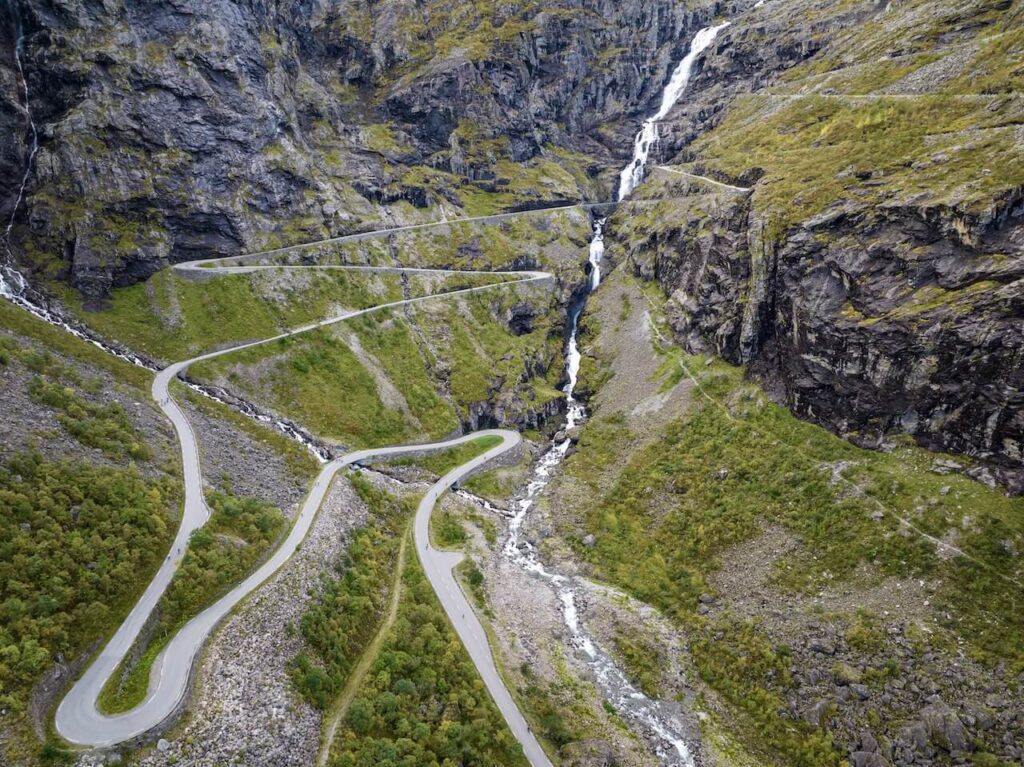

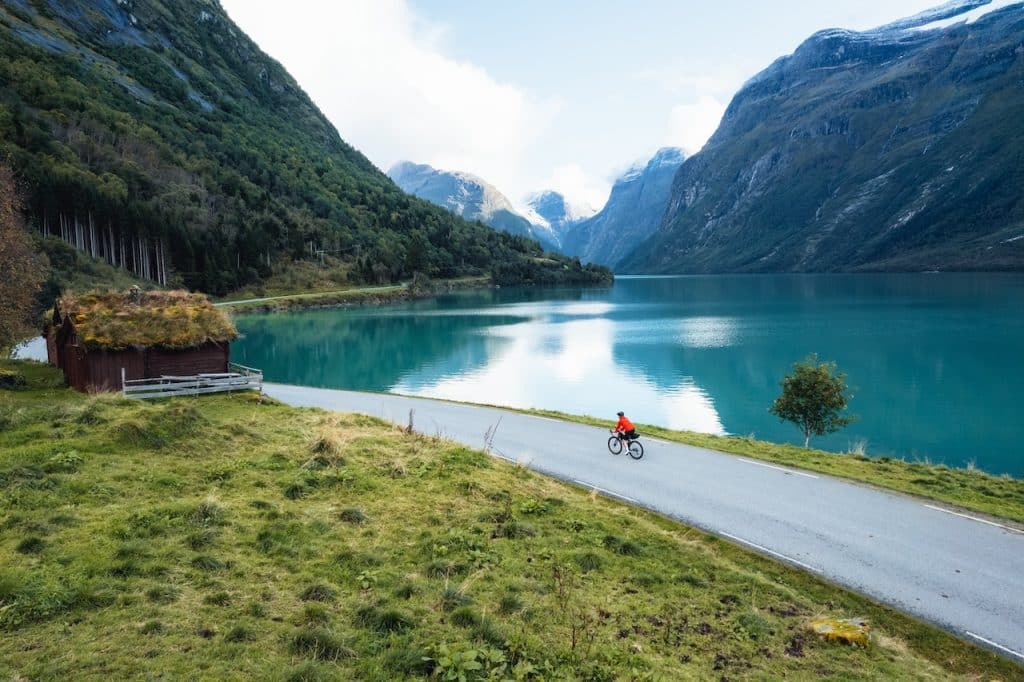

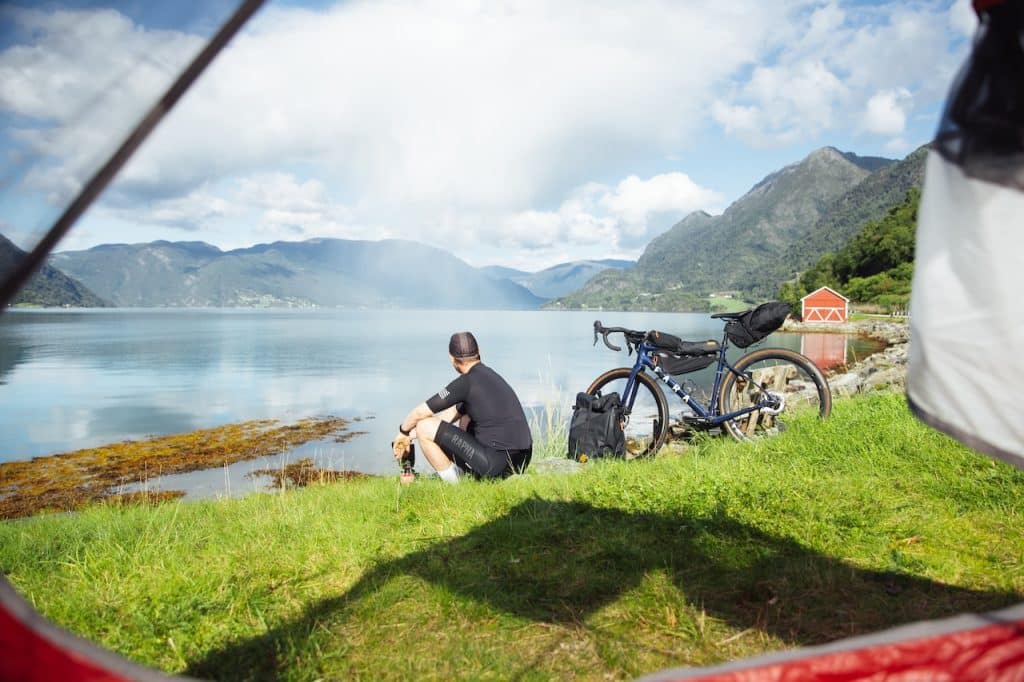

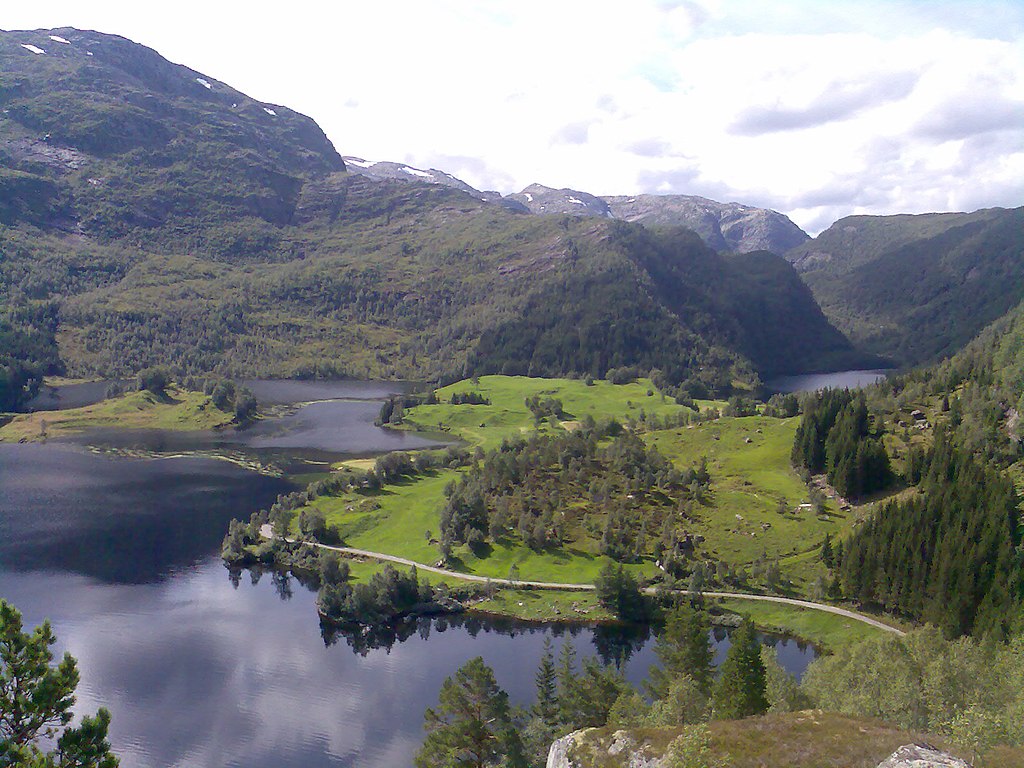

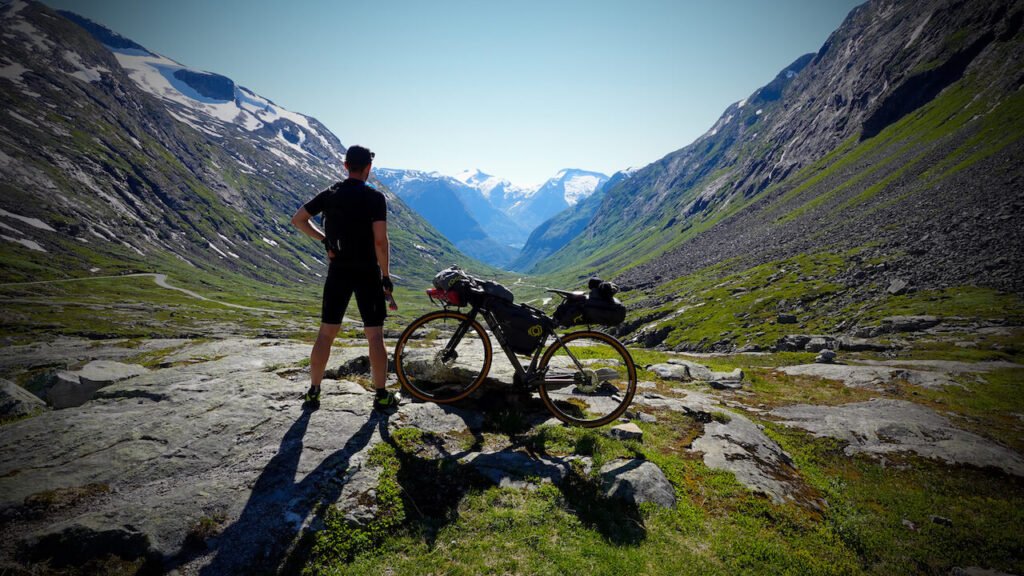

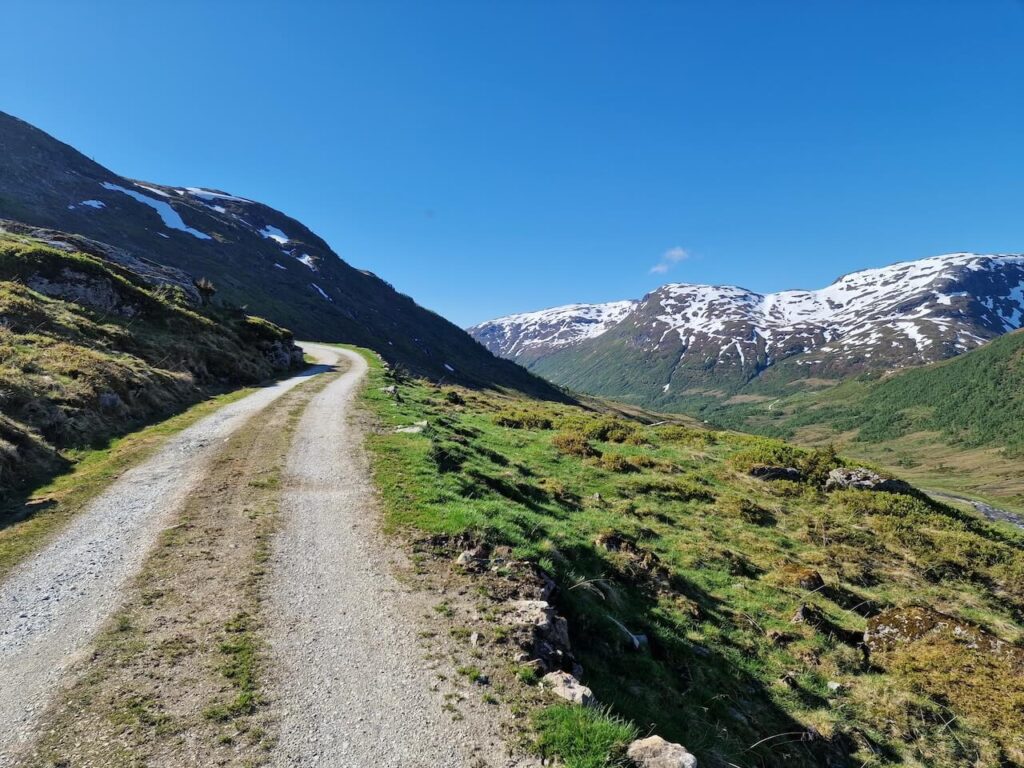

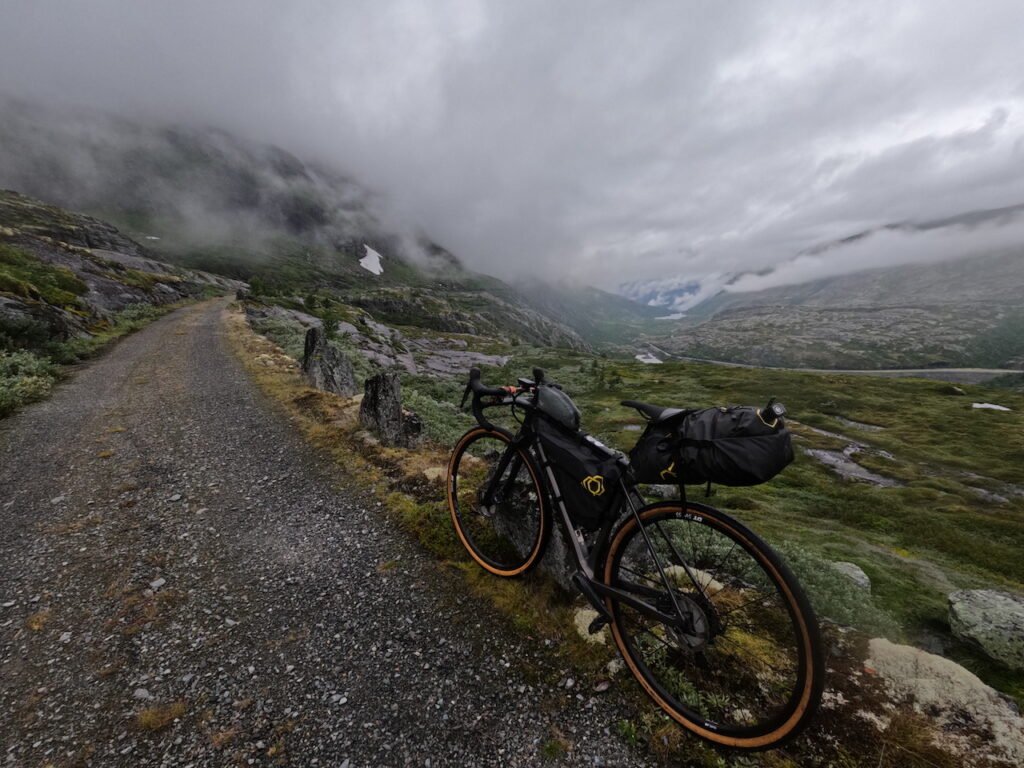

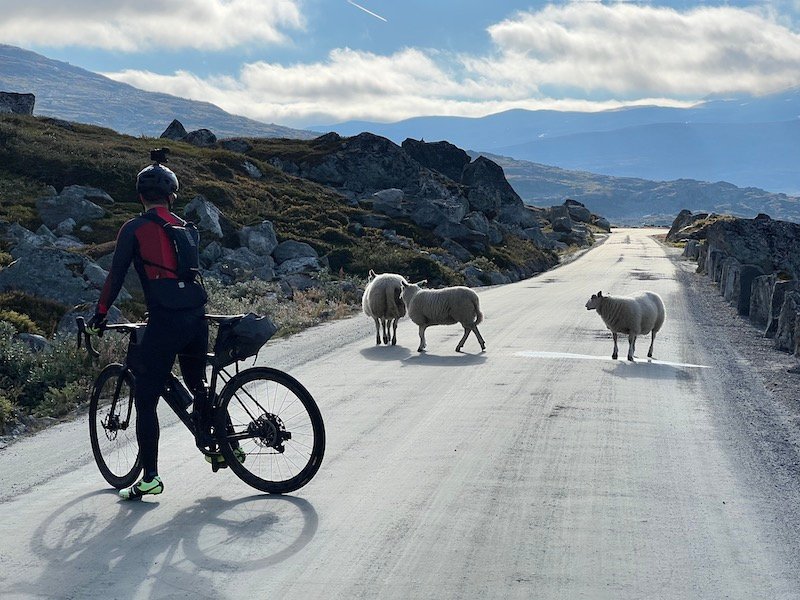

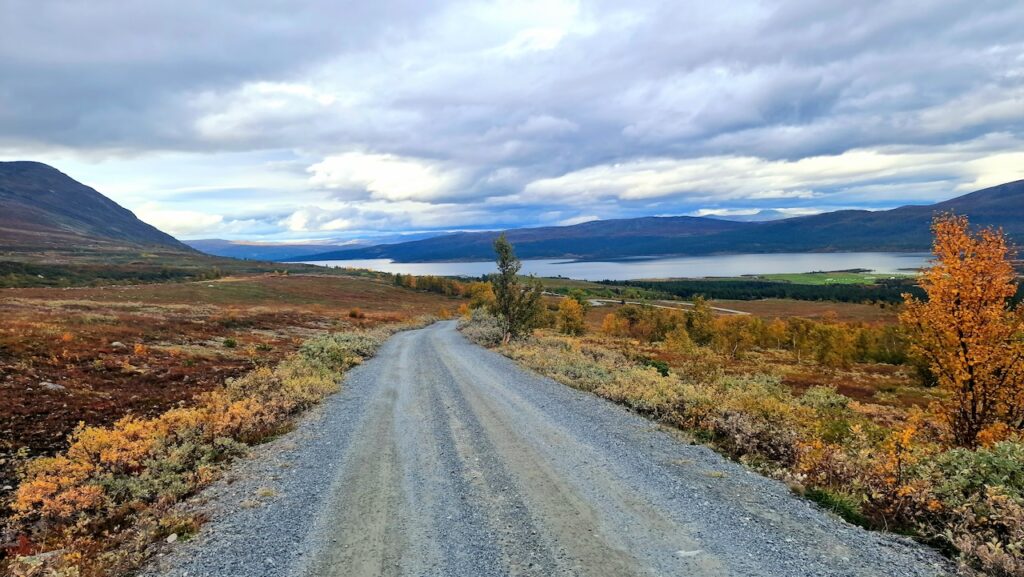

Når du ser for deg Norge, er det dette stedet du umiddelbart kommer til å tenke på. Tenk på imponerende fjorder som strekker seg i det uendelige, ruvende fjell kronet med isbreer og daler som er så perfekt formet av gammel is at de nesten virker for gode til å være sanne!
Å sykle her er som å kjøre en berg-og-dal-bane av følelser du aldri har følt før. Forestill deg dager i strekk fylt med imponerende utsikter som gjør deg konstant forbløffet.
Men det er ikke bare ensomhet og åpne veier. Med så mye naturskjønnhet samlet i ett område, må du regne med tunneler gjennom fjellene, og på populære veier må du dele asfalten med turisttrafikken. Og ja, regnbyger og fjelltåke er en stor mulighet.
Hvis du er en grusentusiast, må du kanskje gå litt på akkord, siden de fleste veiene er asfalterte. Men tro meg, det er et lite offer å gjøre for å få sjansen til å oppleve magien i Fjord Norge fra sykkelsetet.

Som den våteste og tidvis mest forblåste regionen i landet, er Fjord Norge utsatt for naturens luner, som vekselvis gir deg velsignelser og utfordringer. Når forholdene er gunstige, bør du benytte anledningen til å legge ut på lange turer, spesielt over fjelloverganger under stabile værforhold. Vær ekstra forsiktig når du krysser fjellterreng i ustabilt vær, for selv i juli kan temperaturen falle drastisk i høyden.
I mai og juni er det vanligvis mindre nedbør enn i juli og august, selv om det er kjøligere temperaturer. For å takle hele spekteret av værforhold bør du være godt forberedt, og ta med deg hansker i turutstyret, spesielt når du skal opp over 600 meter.
Dessverre finnes det ingen direkte togruter fra Bergen til Ålesund og Trondheim. Hvis du reiser med sykkel, er det beste alternativet å ta en ekspressferge eller gå om bord i den berømte kystbåten. Regionen er også godt dekket av et nettverk av busser, både lokale og nasjonale, som gjør det enkelt å komme seg rundt. Denne fleksibiliteten er uvurderlig, særlig i tunneler der det ikke er tillatt å sykle.
I denne regionen er effektivitet nøkkelen. Følg med på værmeldingen hver dag, og finn de optimale tidspunktene for sykling. Med nesten 24 timer med dagslys om sommeren har du luksusen av fleksibilitet. Husk at de mest populære og naturskjønne veiene har en tendens til å være mest trafikkerte mellom kl. 11.00 og 16.00 i sommermånedene. For å få mest mulig ut av opplevelsen, bør du vurdere å legge ut på tur tidlig om morgenen eller om kvelden.
I tillegg er det viktig å styre forventningene; ikke alle fjell vil vise seg i klart vær, og skyer kan skjule utsikten du hadde forventet. For å få med seg alt dette området har å by på, kan det være nødvendig med flere turer gjennom ulike årstider, men det er noe av det som gjør det så spesielt. Ingenting er garantert, så tålmodighet og strategisk planlegging er avgjørende når du skal ut på tur.






Den vakre byen, som er omgitt av syv fjell, har mange turer å ta fatt på i løpet av en dag eller en helg.
Gå nøye gjennom alle tingene du velger å ta med deg. For hver dag som går, kan det virke som om vekten på sykkelen din øker i takt med at trettheten setter inn og stigningen fortsetter. Velg lette vesker av høy kvalitet med begrenset plass for å tvinge deg selv til å effektivisere og prioritere det viktigste.
Hvis du også har tenkt å delta i turaktiviteter, bør du vurdere å investere i vesker som er allsidige nok til å kunne brukes både på og utenfor sykkelen. Et av de mest anerkjente alternativene er hoftevesken fra Restrap.
Tilbake i 2021 syklet jeg hele Fjord Norge fra Oppdal til Lindenes helt i sør. Dette er min reise.
Cycle Norway er dedikert til å gjøre Norge tryggere og morsommere å oppleve på sykkel, og til å inspirere og informere et voksende publikum om de mulighetene som finnes.